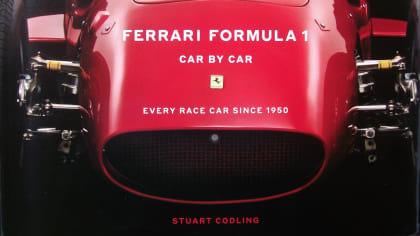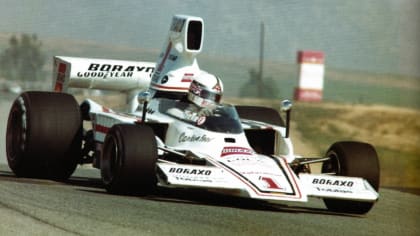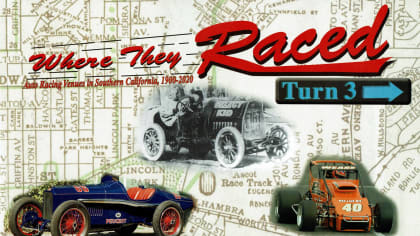The Speed Kings
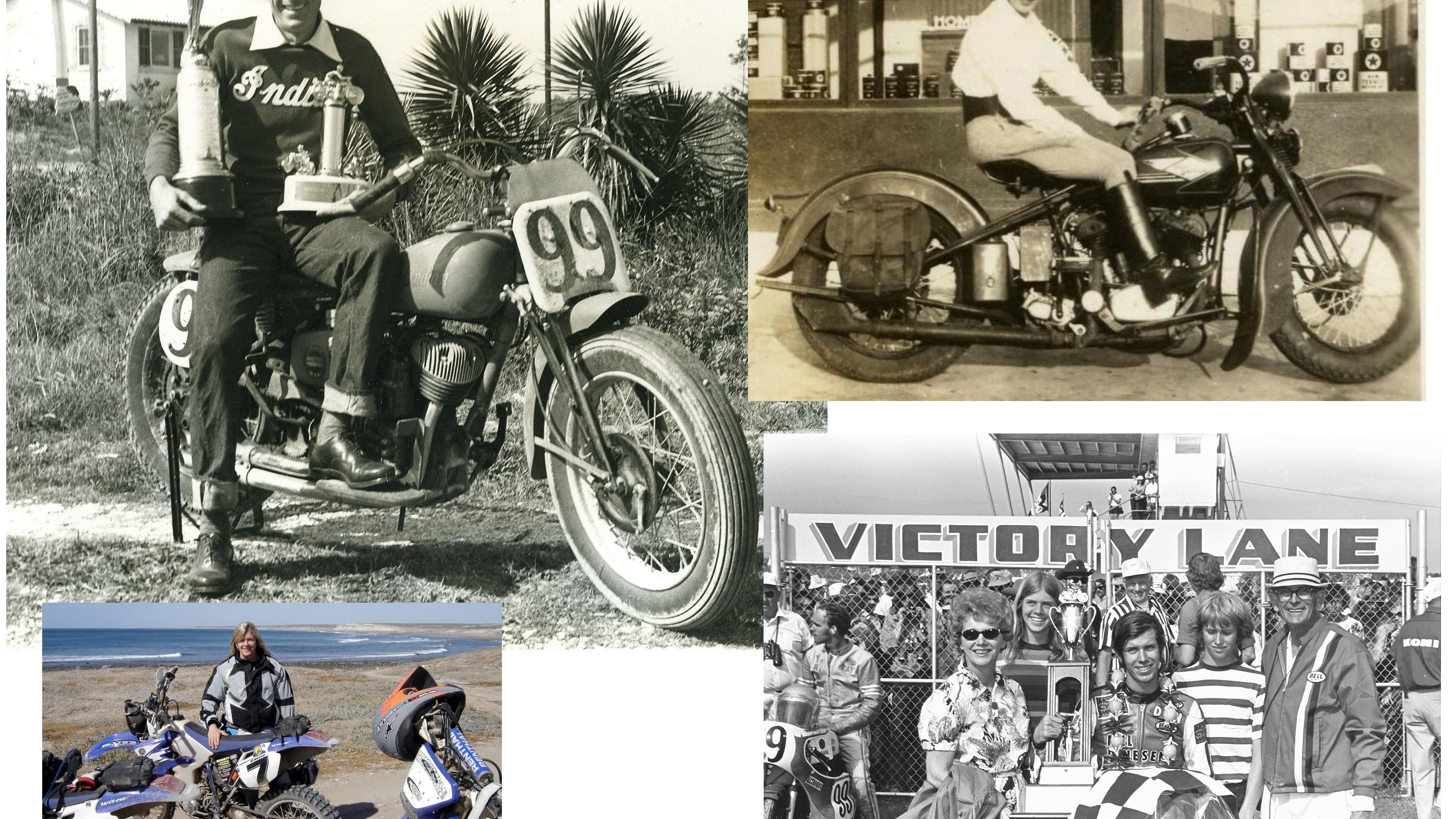
Book Review: The Speed Kings - The Rise and Fall of Motordrome Racing
Author Don Emde brilliantly depicts the famous Hemmingway quote in 'The Speed Kings': "There are really only three sports that matter: bullfighting, mountaineering and motor racing and that the rest are merely games."
By Hector Cademartori & Doug Stokes
Sat, Jun 13, 2020 10:00 AM PST
We’re very lucky here on the Motor Planet... Our world is dynamic and unpredictable, sprinkling in doses of fun and excitement. Our people are passionate and opinionated … let me re-phrase: very opinionated.
We’re also lucky in one specific area: authors.
Sometimes listening to an interview with a writer talking about his latest book, the obvious question arises: “And now so-and-so, after the 900-page biography of Doctor Jonas Salk, what’s your next project? “I’m working on a book about the Crimean War that happened between 1853 and 1856…”, (or something like that) the writer will respond.
But on Motor Planet, our authors stay on subject and keep cranking out book after book about our world of cars and motorcycles. Writers like Tim Considine and Pete Lyons, (who just celebrated his 80th birthday a few days ago) are good examples.
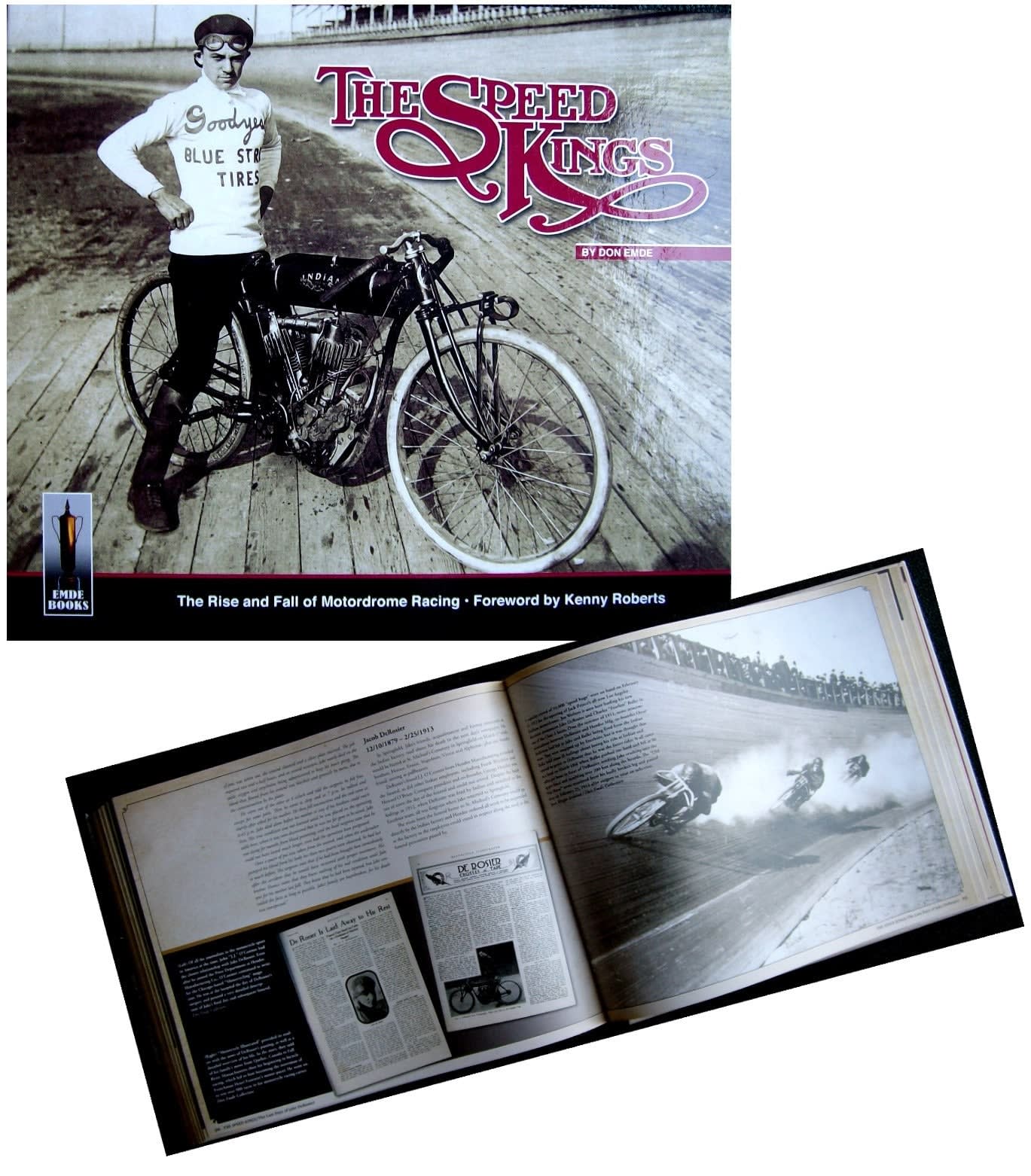
Writers like those two provide a variety of subjects for the delight and enjoyment of those of us who like to put things (books in this case) on shelves, and not in hard-drives. I’ve never seen a personalized dedication in an e-book. Have you?
In 2020, and for the first time in its twenty something years of existence, the prestigious Motor Press Guild’s “Dean Batchelor Award” went to (drum roll please) a book about motorcycles, “The Speed Kings” is from an author who is definitively not a rookie in this race: Don Emde. And his sub-title neatly specifies the content: The Rise and Fall of Motordrome Racing.
I’m sorry to report that the term 'Motordrome' brings images of carnage. I’ve read about these violent times in motorcycle magazines and books. I’ve even contributed artwork illustrating some of them. The legendary Cycle Magazine Editor Phil Shilling in his book “The Motorcycle World” wrote: “Every weekend, it seems, brought injury or death. The splinters’ bowls bloodiest season came in 1913. Motordromes earned their final epithet: “Murderdromes.”
Since motorcycle racing has its roots in bicycle racing, Emde’s book extensively covers that era in its first part. The book then moves to the first days of motorized bicycles and the birth of the sport, the creation of racing leagues and Motordrome racing around the country from the first one in Paterson, New Jersey in 1908 until the end of this form of competition.
After so many accidents and deaths of participants as well as spectators, including the one in Vailsburg, Newark in 1912 when Eddie Hasha went into the crowd, and the particularly gruesome crash of Odin Johnson at the Lagoon Motordrome in Ludlow, Kentucky one year later, the curtain for Motordromes fell in 1928 with a last race at Rockingham Speedway, a deteriorating 1 ¼ mile facility in Salem, New Hampshire.
“The Speed Kings” has a particular approach to the subject. First, Emde’s research is almost closer to archeology than journalism and, from there, he brings to the table a number of social, personal, economic, technical and political side dishes and he places them around the main course: the early days of motorcycle racing. His banquet table allows the reader to understand why things happened; a delicious literary smorgasbord, part The New Yorker, part Smithsonian Magazine, part Popular Mechanics and part National Enquirer.
There are pivotal figures such as Jack Prince, the inventor of the velodrome for bicycles and later on the motor racing version, promoter and manager who lamented the death of his racers adding “But for every time a boy is killed, a dozen wire me for his vacant place”.
And there was Jack DeRosier, the superstar racer, showman and newsmaker (racing and otherwise) and more, including Oscar Hedstrom the boss of Indian, the iconic marque that dominated the racetracks during those early days when the business had not decided yet if “motocycle” needed an “r” between the “o” and the “c”.

“Speed Kings” displays an amazing collection of period photographs, newspaper clips, testimonies, race programs, letters and diagrams arranged in 372 tastefully manicured pages.
The Speed Kings also reminds us that nothing is really new in racing. The infighting, the manipulation and sensationalism of the news, the problems with tires, the escalation of speeds, the factory vs amateur racers, the cheating, the madness, the public’s reactions, the horror and the pressing safety issues. We need only to change the name of the protagonists and the initials of the organizations and we bring the situations to 2020. And there’s one factor that one hundred years later, and in spite of all the progress made, is still part of our sport and we learned how to live with: death.
After finishing the book, I better understood why Hemingway came up with his famous phrase, which author Emde remembers in his book: that there are really only three sports that matter: bullfighting, mountaineering and motor racing and that the rest are merely games.
The foreword is by one fast jockey (as author Joe Scalzo calls them): Kenny Roberts, who, with his proverbial dry-and-to-the-point-and-I’m-not-saying-anything-else-so-don’t-ask-anymore style, reminds us that the racer’s mindset in regard to the dangers associated with motorcycle racing hasn’t changed much in a century. In fact, hasn’t really changed all that much at all.
Don Emde: Motorcycles in every branch of his family tree
Because of my connection to the world of motorcycles, LACar.com gave me the assignment to review the book. Frankly, I believe that Don Emde went to a knife fight armed with a Tommy Gun with extra large magazines when he entered the MPG book competition.
It would be as if John Philip Sousa entered a military march contest, the Sherman Brothers a Disney movie song contest or Luciano Pavarotti an opera singing contest.
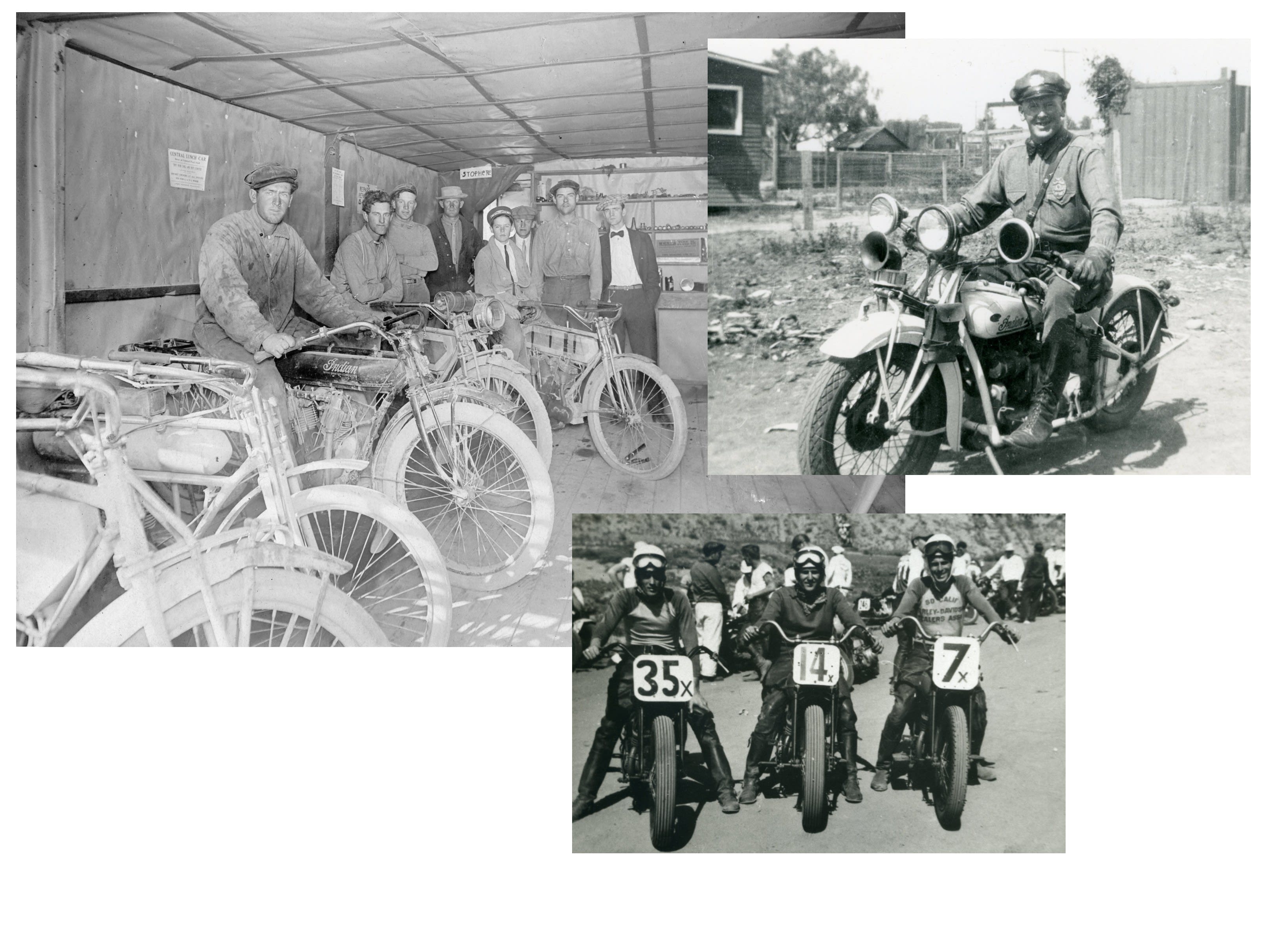
Now, dear reader, let me give you a little background and then you tell me, with a straight face, that I’m wrong.
- Don’s grandfather, Louis “Joe” Emde had a motorcycle repair shop in 1914 in El Centro, CA, and did a little racing with Indian. He closed the shop in the early 1920s and became a motorcycle cop, the first in Imperial County. After moving his family to San Diego he served as patrol officer for Chula Vista and National City Police Dept. until he retired in in the early 1950s.
- His three sons, Cliff, Bill and Floyd Emde, all raced, Floyd in the National circuit winning the Pacific coast TT Championships in 1946, Pacific Coast Flat Track Championship in ’47 as well as the 10-Mile National Championship race at the Milwaukee Fairgrounds and, in 1948, won the biggest race of them all: The Daytona 200 when is was still run on the beach course.
- Floyd’s eldest son, Bob, was a regular participant in the early ‘60s at the Ascot Park in Gardena. The second of three sons, Don Emde, the subject of our article, won the prestigious Daytona 200 in 1972, making Floyd and Don the only father and son to have both won the Daytona 200.
- Don’s victory on a 350cc Yamaha against 750cc motorcycles was the first time a two-stroke motorcycle had ever beaten the four-bangers at Daytona.
- His brother David, youngest of Floyd’s three sons, rose to the top level of the sport in the late-1970s. He won the AMA 250cc National Roadracing Championship in 1977.
- His sister, Nancy, the youngest of two daughters in the Floyd Emde family, raced in amateur TT events in the 1970s. She remained an active motorcyclist and in the 1990s, formed with her husband Chris Steward an off-road motorcycle touring business called Trail Boss Tours and for over 15 years they took riders on tours throughout Baja.
After retiring from competition, Don embarked in writing, publishing and many other motorcycle-related activities, so many that if we gave you a short list we would be here until…what day is today, Saturday?. We would be here until Monday.
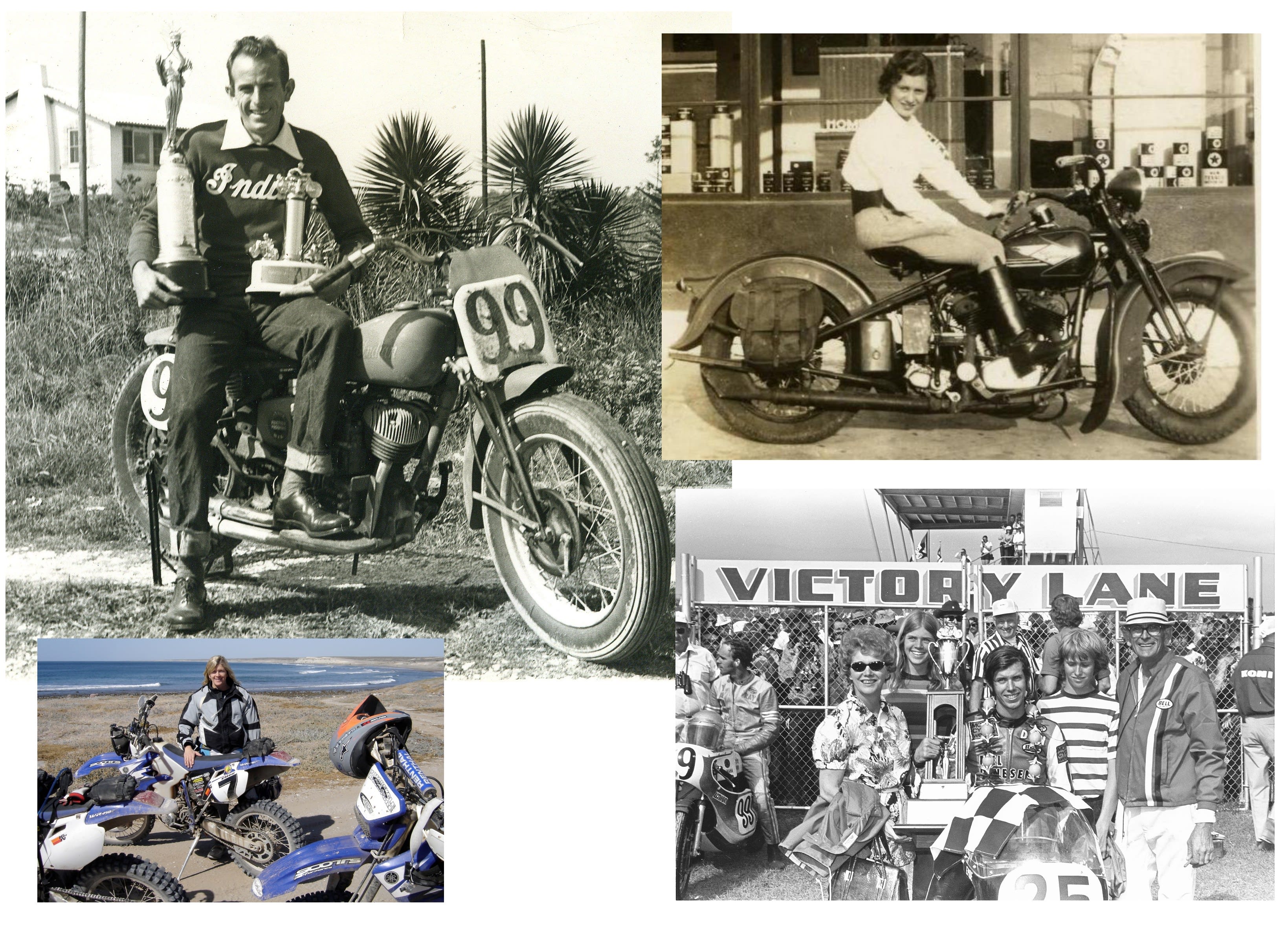
In one of his books, the “History of the Daytona 200- 1937-1990”, I think it’s worth telling the story that led to his big win at Bill France’s Speedway:
”On the Saturday, before the 200-miler, I got a big test to my “feeling” about winning on Sunday. In the early laps of the 250 cc Lightweight race, I crashed in Turn One when I leaned my bike over too far and and my left exhaust pipe hit the ground.
I quickly spun 90 degrees and then “highsided” off the bike at about 80 mph landing directly on my right shoulder.I was taken to the infield hospital and later transferred to Halifax Memorial Hospital with a suspected broken shoulder. The X-rays were negative, but I could barely move my arm.
I was now asking myself, “How am I going to win the 200-miler like this?”. Despite how bad things looked, my feeling was still there that I could win the race. After soaking my shoulder in a bath for many hours Saturday night, I went to the track on Sunday feeling very sore. I felt that I could ride, but first had to get a clearance from the doctor at the infield hospital, standard procedure by the AMA every time a racer had been taken to the hospital. While the exam was very painful, I managed to convince the doctor that I could race”.
With two laps to go and leader Geof Perry out with a a broken chain, Don and Ray Hempstead, also on a Yamaha, fought for the lead. “I was hurting pretty bad from my Saturday crash but at this point I let out all the stops and beat Hempstead to the finish line”, is how he described the end of the race in the book.
If you think all this is enough, wait a second, because there’s more. And this is, as they say, the cherry on top of the sundae: Don’s mother was an avid motorcycle rider and that’s how she and Floyd met.
She had a charming name: Florence. “In the U.S. many women named Florence often go as ‘Flo’, but my mother never did, it was always Florence”, Don told us.
We can only imagine that in the Emde’s household, instead of asking their children to help emptying the dryer, Florence would say: “Children, give me a hand. I need to adjust the clutch of the Knucklehead…”
The truth is that Don Emde really doesn’t write about motorcycles, he writes about his family.
A FIRST-TIME WINNER
Headquartered in Los Angeles, the Motor Press Guild is one of the largest professional automotive media groups in North America and once a year that 600-member strong organization honors the work of a broad range of motoring bloggers, on-air personalities, filmmakers, photographers, and authors at its Dean Batchelor Awards at the Petersen Museum.
This year, and for the first time in the twenty-four history of these prestigious peer-to-peer awards, a work about motorcycle racing was judged “Best of the Year” in that category.
… I - Doug Stokes - know that interesting fact quite well because, I was the chair of the book committee for 2019, and, as such; headed the three-person group who looked at all twelve Batchelor entries this year.
Our job (always) sounds easy (read a bunch of new books about our favorite subject and pick out the best one) but believe me, it was not. Complicated by a superb selection of new books on a broad range of topics we were charged with whittling the stack down to three finalists.
When the smoke cleared the three books left standing were all as different as they could be in both in style and subject … and all brilliantly-written and beautifully presented. They were:
“The Last Shelby Cobra - My Times With Carroll Shelby” by Chris Theodore
“The Speed Kings - The Rise and Fall of the Motordromes” by Don Emde
“Porsche: Excellence Was Expected” (Vol 4) by Karl Ludvigsen.
In the official MPG press release about our comittee’s work I was quoted thus: “Every year the Motor Press Guild/Batchelor Awards “Best Book” judging committee sees a group of the very best new books about motoring that were published that year.
… And every year it never gets any easier to narrow the entries down to just three finalists and then to one “Best of the Year” selection. The three finalists for the 2019 award are all interesting, educational, accurate, a great experience to read, and, even as diverse of subject as they might seem; I feel that they’re all very much in the spirit of Dean Batchelor.
Congratulations All!”
[editor's note: Doug Stokes was the Chair of MPG/DBA Best Book Committee 2019]
It was difficult enough to choose the top three so as the Chair I decided to lay out and see what the other two long time MPG members, Stuart Rowlands and Don Taylor would come up with for the top honors. As it turned out, their rankings matched for first place, something that I quite heartily concurred with.
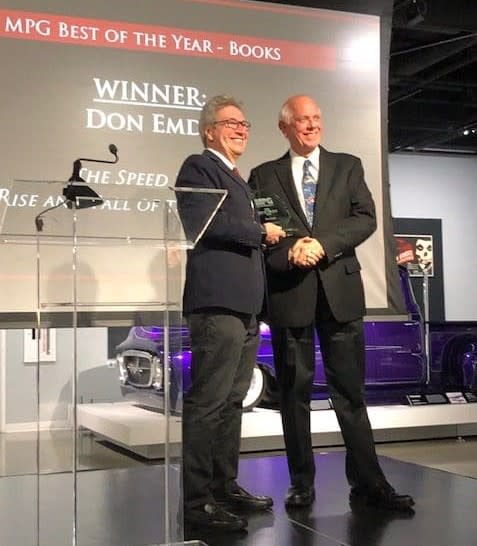
“Speed Kings” is very special book about a romantic and deadly time in American motorcycle racing when vestigial motorcycles were ridden at speeds that made one’s knees weak to watch on gigantic, nearly vertically-banked race tracks that were cobbled together out of thousands upon thousands of 2 by 4’s laying on their sides and help together with millions of ten-penny nails.
Rider safety was non-existent /impossible, horrific accidents were common and the newspapers of the time all called the venues “Murderdromes”, and worse. All of which brought out crowds in the tens of thousands to tracks that sprang up all over the county in the adventuresome and seemingly carefree post WW1 years. It is, for me, one of the most (find a word … perhaps “bruteful” … a combination of beautiful and brutal) books about the sport ever. Scary good.
About The Authors

Hector Cademartori honed his racing art in Buenos Aires. In 1983, he left his job with Corsa Magazine in Argentina and moved to Southern California to specialize in motor racing art. Today, you can find Hector’s art on Indianapolis 500 Yearbook covers, Laguna Seca Raceway, Auto Club Speedway and Carrera Panamericana posters, the NHRA, foreign and domestic automobile and motorcycle magazines, motorcycle manufacturers, Toyota Motorsports, TRD and Lucas Oil. Hector races his 1973 Datsun 240Z “Ferratsun” around the So Cal circuits, and a 1991 Volvo 740 Wagon with the 24 Hours of LeMons.
Together with
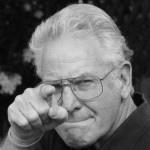
Doug has a long and wide-ranging history in the motoring business. He served five years as the Executive Director of the International Kart Federation, and was the PR guy for the Mickey Thompson's Off-Road Championship Gran Prix. He worked racing PR for both Honda and Suzuki and was a senior PR person on the first Los Angeles (Vintage) Grand Prix. He was also the first PR Manager for Perris Auto Speedway, and spent over 20 years as the VP of Communications at Irwindale Speedway. Stokes is the recipient of the American Autowriters and Broadcaster’s 2005 Chapman Award for Excellence in Public Relations and was honored in 2015 by the Motor Press Guild with their Dean Batchelor Lifetime Achievement Award. 2025 saw Stokes voted into the Go Kart Hall of Fame. “… I’ve also been reviewing automobiles and books for over 20 years, and really enjoy my LACar assignments.” he added.


